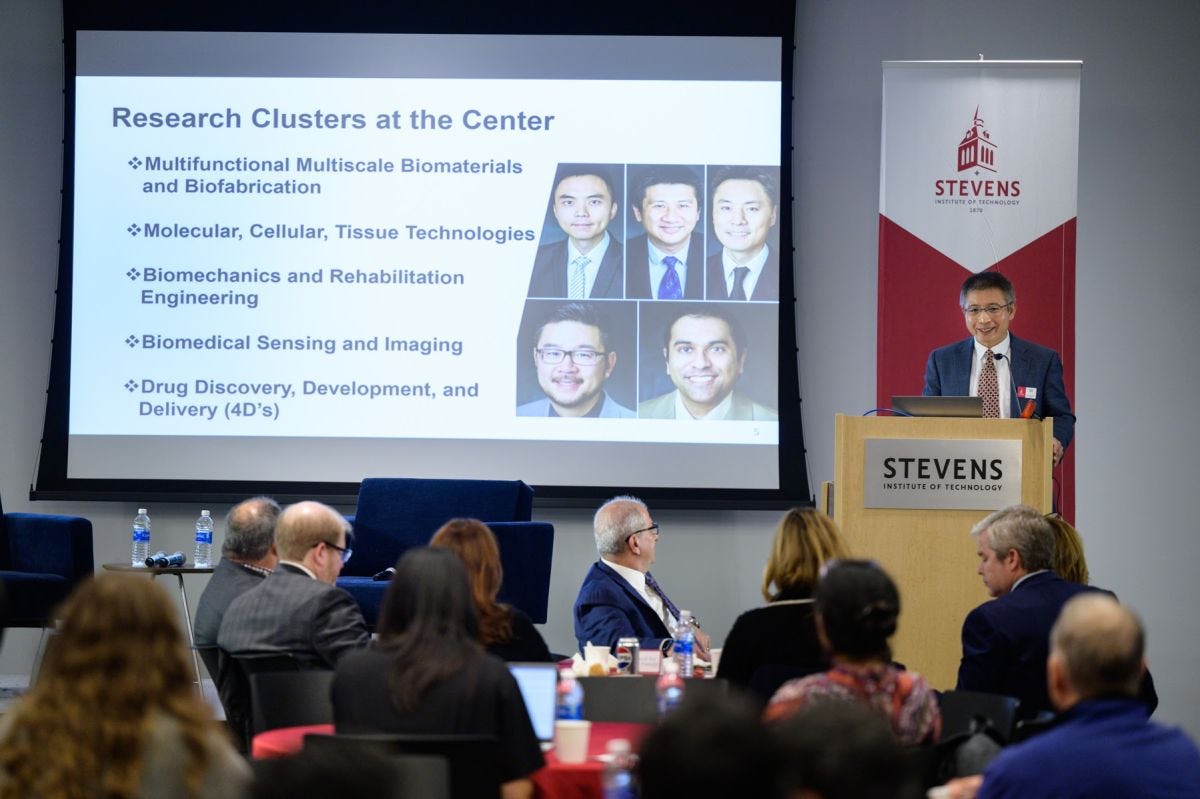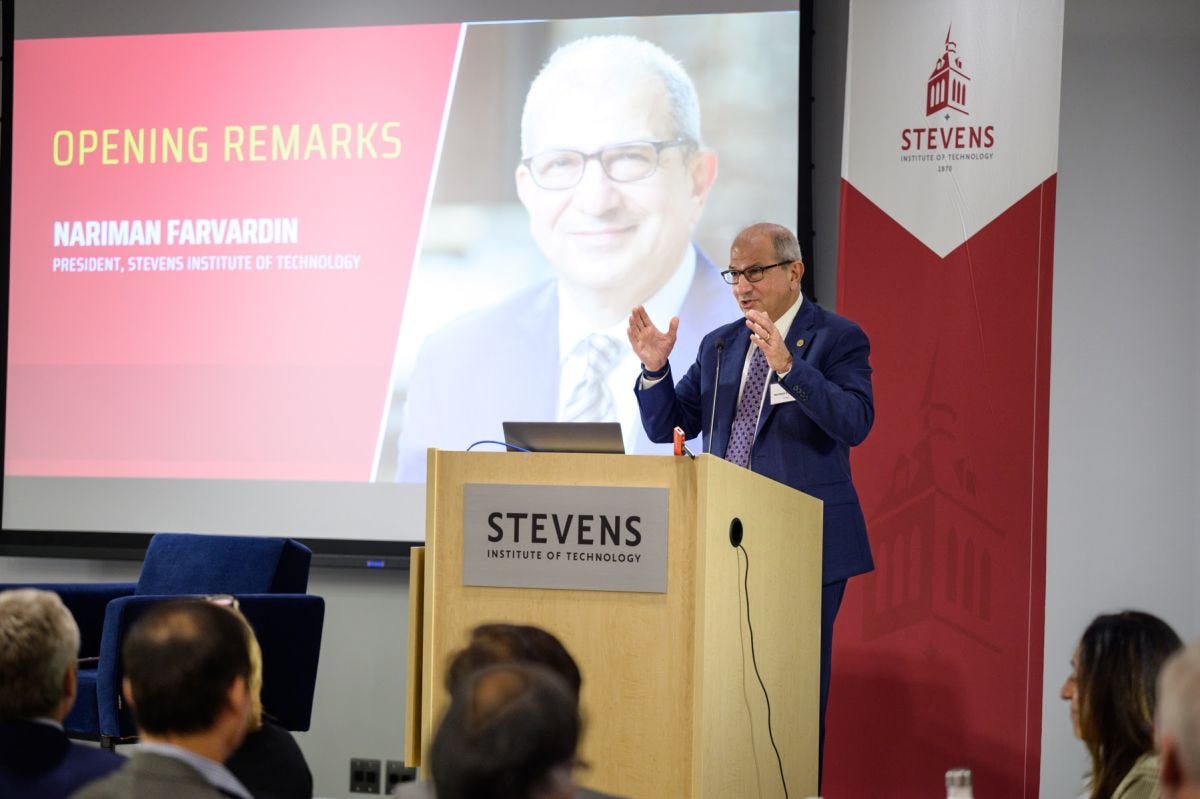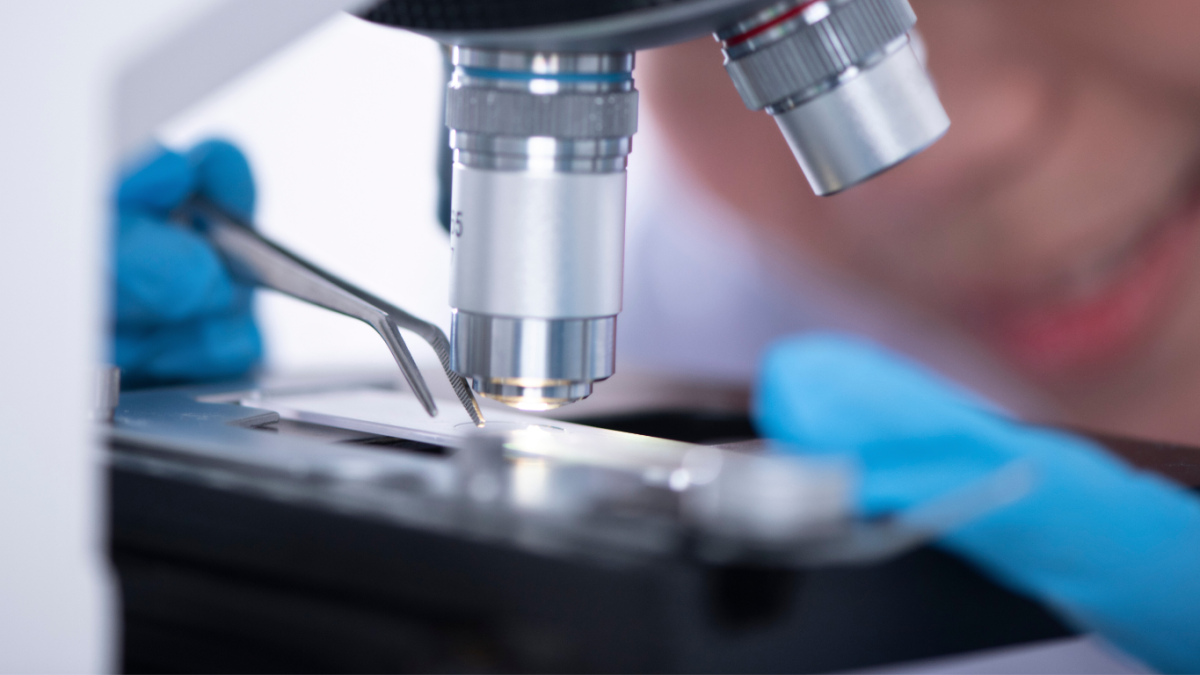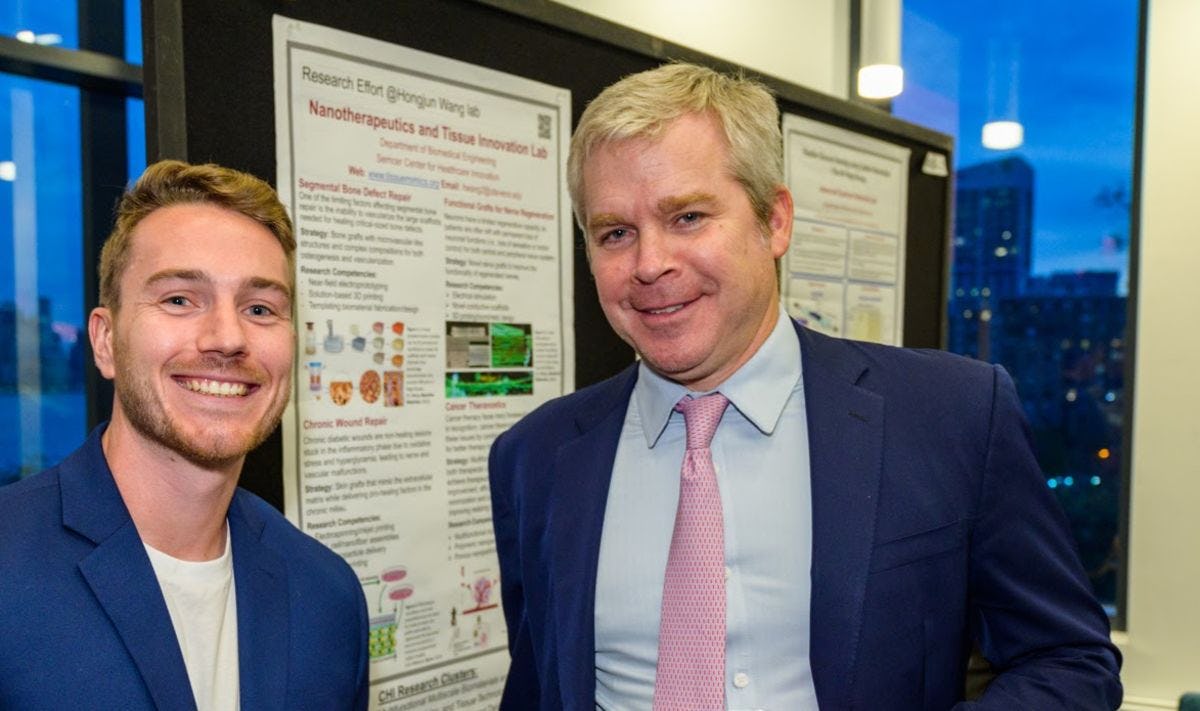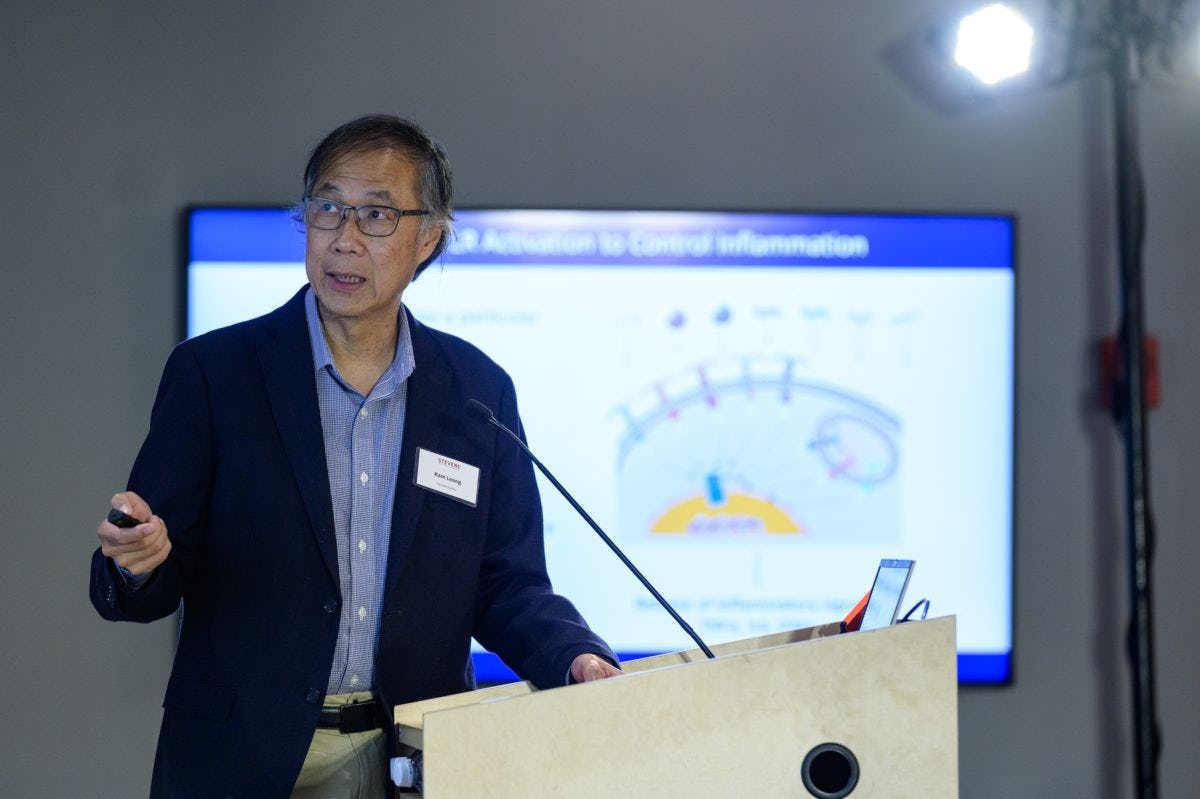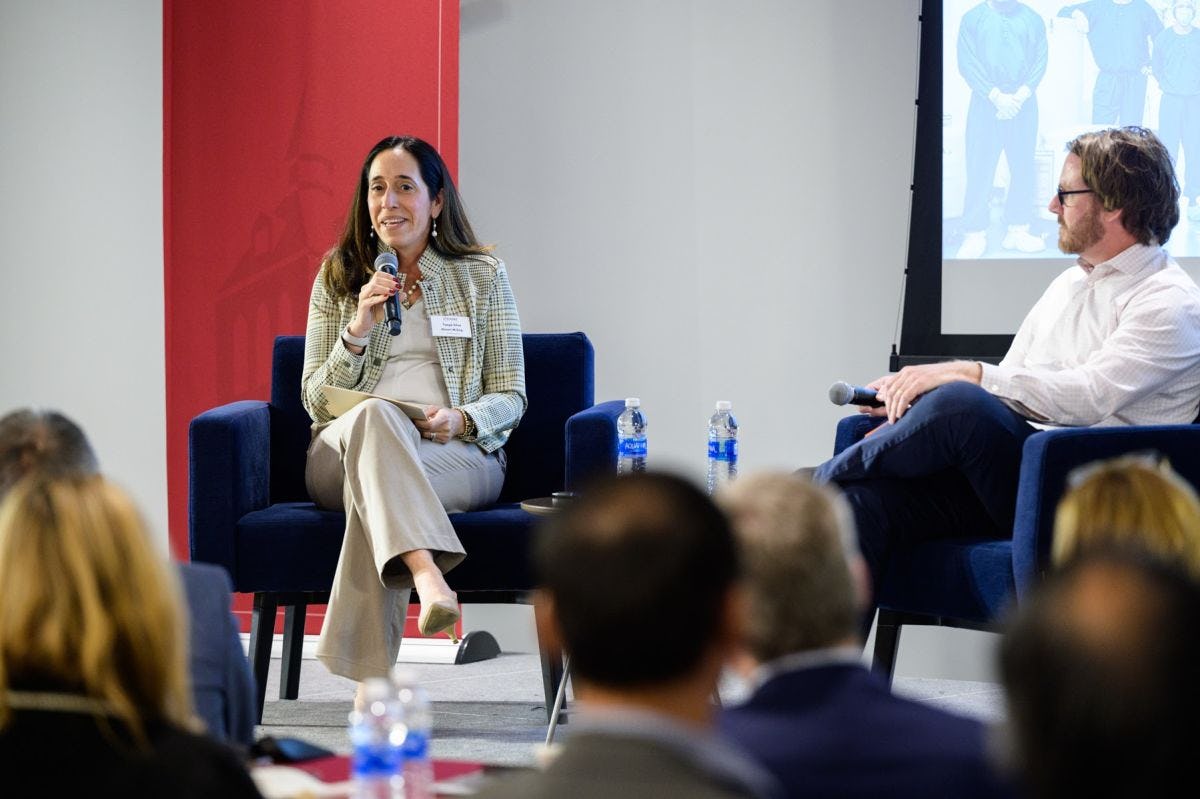Stevens’ Semcer Center for Healthcare Innovation Relaunches, Expands Scope
Event honors longtime healthcare philanthropist Frank Semcer ’65 and his family — and presents an expanded mission newly organized and focused around five research clusters
Stevens’ Semcer Center for Healthcare Innovation (CHI) unveiled its updated mission to the public in a campus event November 17 that also featured remarks from Stevens leadership, the Semcer family, a Columbia University prominent biomaterials researcher and a top official at Pfizer.
“The idea is to work across departments and take advantage of collaborations to maximize our impact,” explained center director Hongjun Wang before the half-day event, held in the University Center Complex’s Tech Flex Auditorium.
“Instead of working independently, our researchers will make more of a ‘team effort,’ both across disciplines and schools here at Stevens and also by building new and existing collaborations with industry and medical and clinical partners.”
“Toward that end, we have also recently reorganized our research into five focused research clusters.”
Generous giving; powerful partnerships
Stevens President Nariman Farvardin led off the program with fond words for alumnus, trustee and philanthropist Frank Semcer ‘65, whose company MICRO has long manufactured medical devices, robotic-surgery instruments and other important healthcare technologies.
“I have a strong emotional relationship with the Semcer family,” said Farvardin. “There are countless remarkable things I could share with you about Frank.”
President Farvardin noted how Semcer’s personal philanthropy has already included endowment of a Steven faculty chair, scholarship support and giving to support a key tissue-engineering laboratory, among other gifts.
CHI, he continued, will support Stevens’ increasing strategic efforts and impact in the field of healthcare research, which has received three major recent awards from the National Institutes of Health and collaborates with leading industry partners such as Burroughs-Wellcome and leading academic institutions such as the University of Pennsylvania.
Vice Provost for Research and Innovation Ed Synakowski followed, reinforcing the power of synergy in research efforts and noting CHI’s ongoing collaborations with the Stevens Institute for Artificial Intelligence (SIAI).
CHI, he said, will be “bringing the power of two recently relaunched centers together… to make something even greater. This is also part of the magic and the power of Stevens: that different quarters of the campus engage with each other in inventive ways, seeking a greater good beyond their own discipline.”
A brief video of Frank Semcer followed, during which the appreciative alumnus said “the new center is game-changer for our school” and expressed how “Stevens gave me the tools to be successful in everything I did.”
Two of Semcer’s sons Frank Semcer Jr. and Brian Semcer MTM ‘00, gave remarks next.
“MICRO is truly a Stevens success story, as much as it is a Semcer family one,” said Brian Semcer, noting the firm has supervised more than 160 co-op students (mostly from Stevens) since 2000 and currently employs 50 graduates of the university.
“The re-launch of this important resource will continue to reinforce Stevens as a leader in healthcare-related research,” he added. “The enduring partnership between our family and this esteemed institution has not only shaped our lives but has also played a pivotal role in the growth and success of our company.
“It's a testament to the power of education and the lasting impact that a dedicated community can have on shaping the future…. Let us continue to build Stevens’ role as a global force in shaping the next generation of medical innovators.”
Biomedical nanotech, pharmaceuticals, faculty research
Then it was time for the event keynote speakers.
Acclaimed Columbia University biomaterials researcher Kam Leong, who holds more than 60 issued patents, described for the audience his work to develop and test so-called nanoparticle “scavengers” that can target, collect and eliminate certain freely circulating DNA fragments in the body that can help trigger or worsen inflammation in a variety of health conditions such as colitis, liver disease, lupus and some cancers.
“There is a lot of science to be done” in the area, Leong summarized, adding that Stevens and Columbia can and should increasingly collaborate on useful healthcare research going forward.
Next, Stevens graduate alumna Tanya Alcorn M.Eng. ’15 — a senior vice president at Pfizer who has worked on vaccine manufacture and delivery for nearly 15 years, now supervising more than 600 products — sat with Greg Townsend, Stevens’ director of corporate, government and community relations, for a fascinating conversation.
The discussion touched upon such topics as academic-industry collaboration and Pfizer’s successful development of an effective mRNA-based vaccine during the COVID-19 pandemic.
Asked which areas will be very active for the pharma industry in the near future, Alcorn responded with three: genomics and gene therapeutic research (the design of personalized therapies for patients, particularly those with rare diseases); AI to improve the speed and quality of medicine manufacture; and expanded access to medicines and healthcare for underserved communities worldwide through telemedicine and higher-tech delivery methods “to serve all patients in all areas.”
Five CHI-affiliated Stevens researchers continued the program by briefly describing current research in high-impact areas:
Pin-Kuang Lai (Department of Chemical Engineering and Materials Science) discussed the use of AI in drug screening, helping pharmaceutical manufacturers rapidly assess the viability of antibody therapies before manufacture, including work with AstraZeneca;
Yu Gan (Department of Biomedical Engineering) explained the use of AI to clarify medical imaging, including by generating realistic histological imagery data to compare with patient imagery data;
Jinho Kim (Department of Biomedical Engineering) described his team’s work to repair and rehabilitate donor lungs, a critical challenge given that 200 million patients worldwide suffer respiratory diseases each year but 80% of donated lungs cannot ultimately be used for transplant;
Robert Chang (Department of Mechanical Engineering) discussed his lab’s biofabrication of human cells and tissues such as volumetric muscle tissue, using sophisticated electrohydrodynamic 3D printing techniques;
and Raviraj Nataraj (Department of Biomedical Engineering) described emerging techniques for more effective rehabilitation of spinal-cord injury and other patients, including through the use of virtual reality (VR) interfaces.
The event concluded with an informal poster session in the UCC Gallery, where graduate students and postdoctoral fellows explained projects in areas including neurodegenerative disease, glucose monitoring, movement therapy, biophotonics and tissue engineering to attendees.

